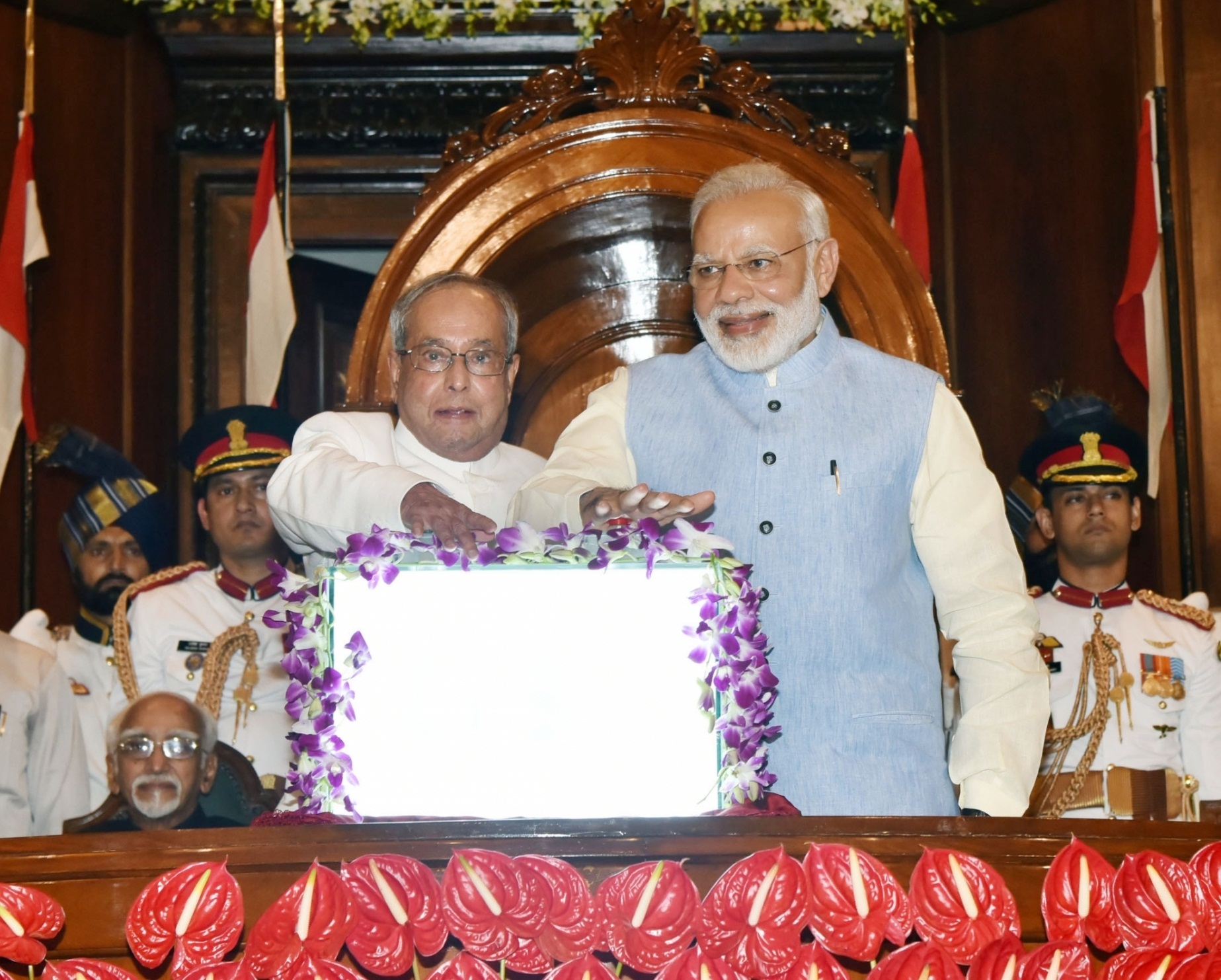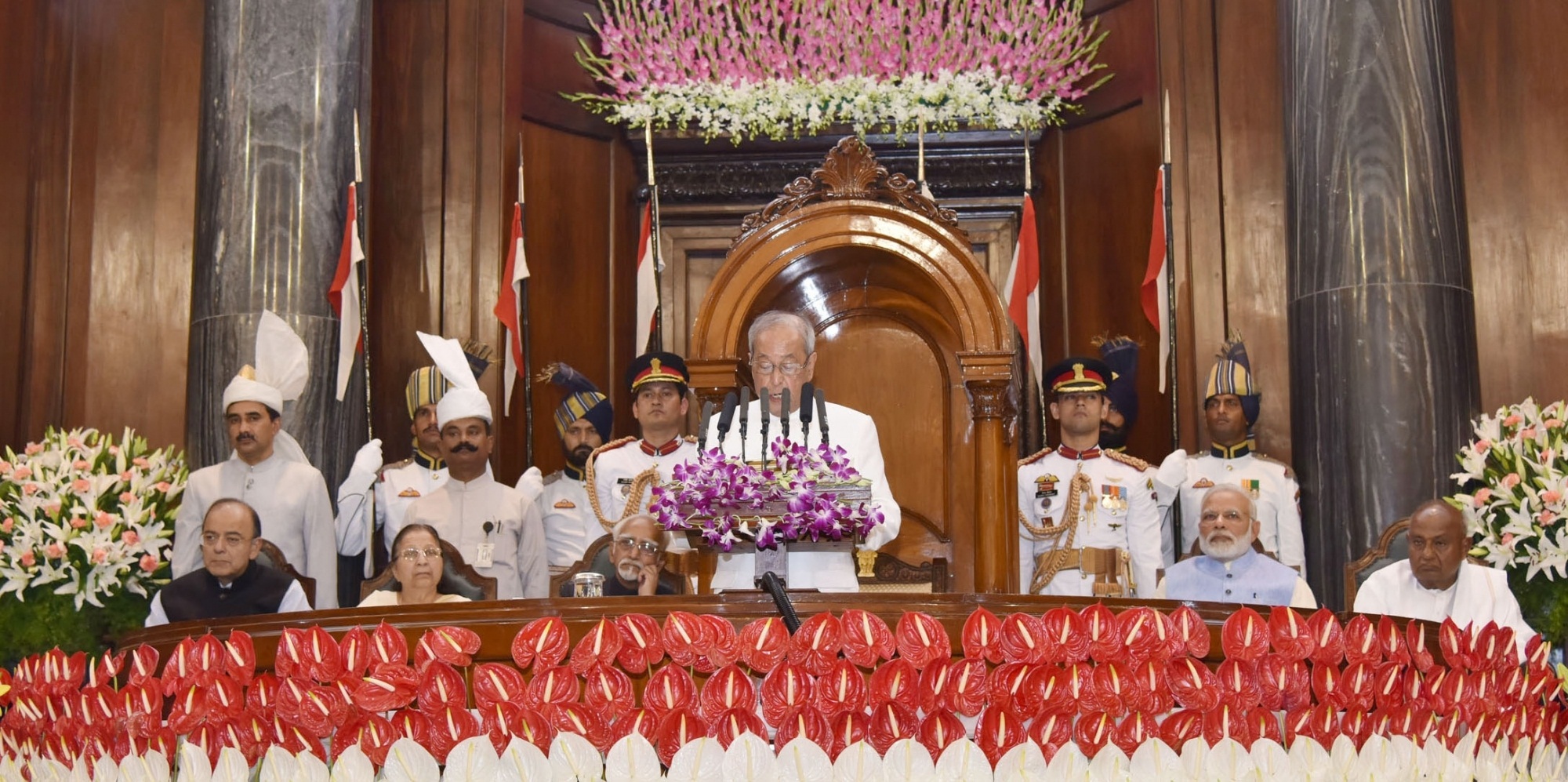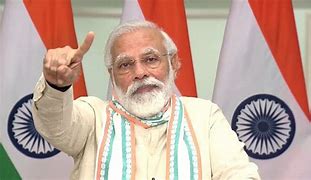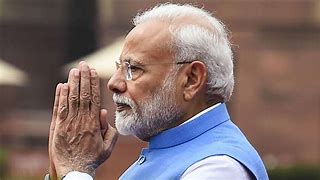Feature
PM Narendra Modi rolls out historic GST at midnight in Parliament
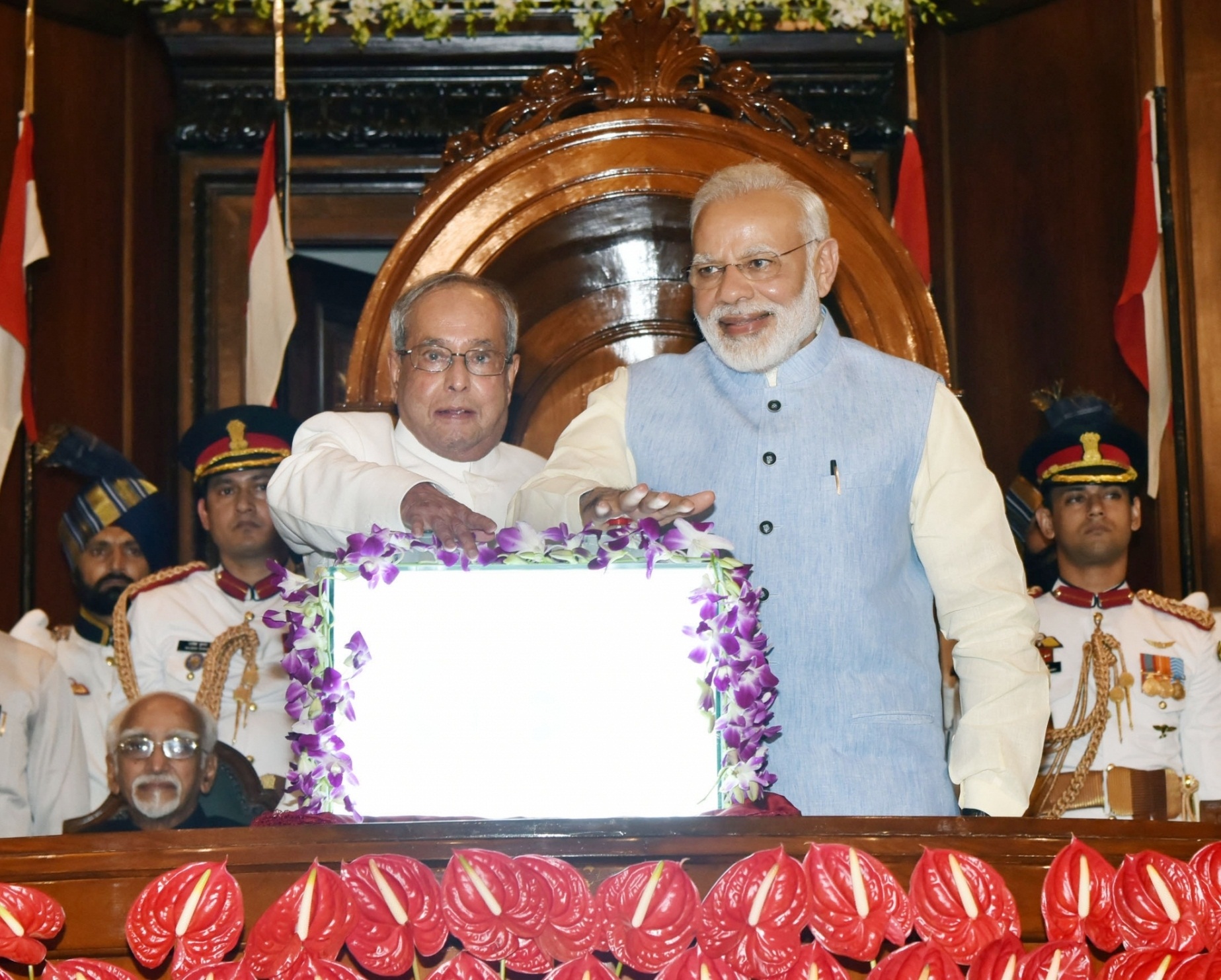
New Delhi: The Goods and Services Tax (GST), India’s biggest tax reform since Independence, rolled out past midnight Friday in the precincts of the hallowed Central Hall of Parliament to usher in a new indirect tax regime in an event that sought to evoke memories of the famous ‘Tryst with Destiny’ night the country got freedom in 1947.
A minute after the stroke of midnight, President Pranab Mukherjee and Prime Minister Narendra Modi pressed the button to launch the new indirect tax regime on a digital screen with “GST” emblazoned on it in a golden hue.
Conceived on the principle of ‘one nation, one tax, one market’, the tax that subsumes 17 central and state levies was launched in the presence of Vice President Hamid Ansari, former Prime Minister H.D. Deve Gowda, Lok Sabha Speaker Sumitra Mahajan, Finance Minister Arun Jaitley, MPs, chief ministers, state finance ministers, officials of the Centre and states.
Notwithstanding the fact that the GST Law was a consensus product evolved over 14 years, the function in colorfully-decked Parliament House was boycotted by major opposition parties like Congress, Trinamool Congress, RJD, DMK and Left parties, saying the government was making a spectacle of a legislation for self-promotion, a charge Jaitley rejected. In keeping with his party’s decision, former Primer Minister Manmohan Singh kept away from the event. However, MPs and leaders of Congress allies NCP and Samajwadi Party attended the function.
Addressing the gathering, President Pranab Mukherjee said the introduction of GST is a moment of precedent for the country and a matter of personal satisfaction for him because of his role as Finance Minister earlier. “I had always believed that GST was a matter of time and was happy when it was enacted and I gave assent to the Constitution amendment last year,” he said.
He said the new law is a tribute to the maturity and wisdom of Indian democracy. The GST Council was a unique experiment under the Indian Constitution because of the shared sovereignty.
In his speech, Modi said the roll out of GST is the best example of cooperative federalism and success of Indian democracy. “The credit for the new law does not go to one party or one government but was a shared legacy of all,” he said.
In a veiled rejoinder to opposition criticism of the midnight function in Parliament, the Prime Minister said there cannot be a “better and sacred” venue than the Central Hall for the historic roll out.
The GST process cannot be confined to just economic system but was a collective effort of all, he said, adding it was a product of long discussions among the best brains of the country. “It is an example of Team India’s strength and ability,” he said.
Referring to the eminent personalities like Jawaharlal Nehru, Sardar Patel, Maulana Abul Kalam Azad and Babu Rajendra Prasad who had adorned the Central Hall, Modi said like Patel had integrated the country, the GST would integrate the country economically.
He described the GST as ‘Good and Simple Tax’ — good because there will be no tax on tax and simple because there will be only one form of tax. It will also help eliminate black money and corruption because of the transparency it seeks to bring in, he said.
Modi said whatever was lacking in growth and development of the country, GST will provide the opportunity to realise them.
GST rolls out by Prime Minister Narendra Modi past midnight from Central Hall of Parliament:
Ahead of the launch, the GST Council slashed the rate of fertilisers from 12 per cent to 5 per cent and of exclusive parts of tractors from 28 per cent to 18 per cent to reduce the burden on farmers.
The launch of GST, which the government claimed would result in reduction of prices of articles of common consumption, also came amidst fears from various business sections that prices would go up under the new regime.
Welcoming the gathering, Jaitley described GST as the biggest and most ambitious tax reform which is an achievement of the country through consensus. It highlights the fact that India can rise above narrow politics and work for country’s benefit. In making the GST, neither the Centre nor the states gave up their sovereignty.
He said all MPs, state governments, political parties, state finance ministers and dedicated officials of the Centre and states deserved to be appreciated for realising the project of GST Law.
Jaitley said under GST, the revenues will go up as the compliance goes up and the GDP will also increase.
Parliament’s Central Hall has witnessed such a function only on three occasions earlier. First was on the occasion of Independence when first Prime Minister Jawaharlal Nehru made the famous ‘Tryst with Destiny’ speech. The second was on the occasion of silver jubilee of Independence in 1972 and golden jubilee in 1997.
The GST is expected to check tax evasion and broaden tax base. In the new regime, all filings will be done only through electronic mode to ensure non-intrusive administration. This will minimise taxpayers’ physical interaction with the tax officials.
The GST regime seeks to reduce rates of over 50 per cent of items of daily use and charge others at much lower rate of 5 per cent, 12 per cent and 18 per cent.
A higher tax rate is imposed on luxury and sin goods at 28 per cent in the new regime. Certain services like telephone, banking and insurance are expected to feel the pinch of higher taxes.
The GST also promises taxpayers a refund against their sales within 60 days. Similarly, exporters will get refund within seven days. For protection of consumer rights, the new law provides anti-profiteering provisions. In a departure from the normal practice, the GST will be administered together by the Centre and the states.
Entertainment
Meghalaya Reserves Legalized Gambling and Sports Betting for Tourists

The State Scores Extra High on Gaming-Friendly Industry Index
Meghalaya scored 92.85 out of 100 possible points in a Gaming Industry Index and proved to be India’s most gaming-friendly state following its recent profound legislation changes over the field allowing land-based and online gaming, including games of chance, under a licensing regime.
The index by the UK India Business Council (UKIBC) uses a scale of 0 to 100 to measure the level of legalisation on gambling and betting achieved by a state based on the scores over a set of seven different games – lottery, horse racing, betting on sports, poker, rummy, casino and fantasy sports
Starting from February last year, Meghalaya became the third state in India’s northeast to legalise gambling and betting after Sikkim and Nagaland. After consultations with the UKIBC, the state proceeded with the adoption of the Meghalaya Regulation of Gaming Act, 2021 and the nullification of the Meghalaya Prevention of Gambling Act, 1970. Subsequently in December, the Meghalaya Regulation of Gaming Rules, 2021 were notified and came into force.
All for the Tourists
The move to legalise and license various forms of offline and online betting and gambling in Meghalaya is aimed at boosting tourism and creating jobs, and altogether raising taxation revenues for the northeastern state. At the same time, the opportunities to bet and gamble legally will be reserved only for tourists and visitors.
“We came out with a Gaming Act and subsequently framed the Regulation of Gaming Rules, 2021. The government will accordingly issue licenses to operate games of skill and chance, both online and offline,” said James P. K. Sangma, Meghalaya State Law and Taxation Minister speaking in the capital city of Shillong. “But the legalized gambling and gaming will only be for tourists and not residents of Meghalaya,” he continued.
To be allowed to play, tourists and people visiting the state for work or business purposes will have to prove their non-resident status by presenting appropriate documents, in a process similar to a bank KYC (Know Your Customer) procedure.
Meghalaya Reaches Out to a Vast Market
With 140 millions of people in India estimated to bet regularly on sports, and a total of 370 million desi bettors around prominent sporting events, as per data from one of the latest reports by Esse N Videri, Meghalaya is set to reach out and take a piece of a vast market.
Estimates on the financial value of India’s sports betting market, combined across all types of offline channels and online sports and cricket predictions and betting platforms, speak about amounts between $130 and $150 billion (roughly between ₹9.7 and ₹11.5 lakh crore).
Andhra Pradesh, Telangana and Delhi are shown to deliver the highest number of bettors and Meghalaya can count on substantial tourists flow from their betting circles. The sports betting communities of Karnataka, Maharashtra, Uttar Pradesh and Haryana are also not to be underestimated.
Among the sports, cricket is most popular, registering 68 percent of the total bet count analyzed by Esse N Videri. Football takes second position with 11 percent of the bets, followed by betting on FIFA at 7 percent and on eCricket at 5 percent. The last position in the Top 5 of popular sports for betting in India is taken by tennis with 3 percent of the bet count.
Local Citizens will Still have Their Teer Betting
Meghalaya residents will still be permitted to participate in teer betting over arrow-shooting results. Teer is a traditional method of gambling, somewhat similar to a lottery draw, and held under the rules of the Meghalaya Regulation of the Game of Arrow Shooting and the Sale of Teer Tickets Act, 2018.
Teer includes bettors wagering on the number of arrows that reach the target which is placed about 50 meters away from a team of 20 archers positioned in a semicircle.
The archers shoot volleys of arrows at the target for ten minutes, and players place their bets choosing a number between 0 and 99 trying to guess the last two digits of the number of arrows that successfully pierce the target.
If, for example, the number of hits is 256, anyone who has bet on 56 wins an amount eight times bigger than their wager.

